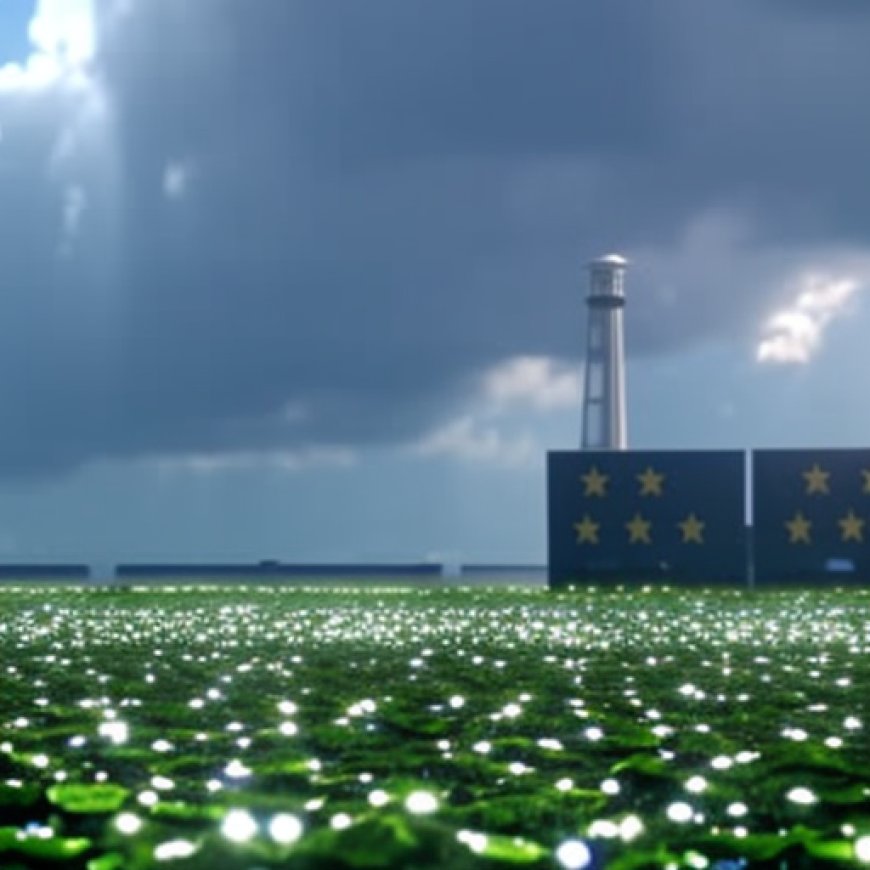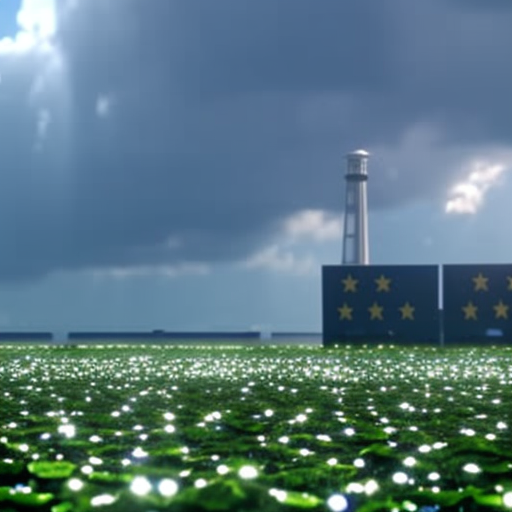Vestager pitches new ‘systematic’ defence of European clean technologies
Vestager pitches new 'systematic' defence of European clean technologies EURACTIV


EU Competition Commissioner Announces New Investigations into Chinese-Supplied Wind Farms in Europe
The EU Competition Commissioner, Margrethe Vestager, announced new investigations into Chinese-supplied wind farms in Europe during her visit to the United States on April 9th. She emphasized the importance of protecting clean tech from unfair competition and called for a fresh international approach to achieve this goal. Vestager highlighted the need to control the development of critical technologies and their supply chains to maintain a competitive advantage in the global market.
Significance of Sustainable Development Goals (SDGs)
- SDG 7: Affordable and Clean Energy
- SDG 9: Industry, Innovation, and Infrastructure
- SDG 13: Climate Action
- SDG 17: Partnerships for the Goals
New International ‘Trustworthiness’ Criteria
Vestager proposed the creation of an international list of ‘trustworthiness’ criteria for critical clean technologies. These criteria would include considerations such as a product’s environmental footprint, respect for labor rights, and cybersecurity concerns. Like-minded trading partners, such as G7 countries, would use these criteria for public procurement and incentivizing climate-friendly industries. This framework aims to support domestic producers who adhere to these standards and avoid a wasteful subsidy race between countries.
Key Points:
- International list of ‘trustworthiness’ criteria for critical clean technologies
- Used by like-minded trading partners for public procurement and incentivizing climate-friendly industries
- Avoids wasteful subsidy race between countries
New Tools and Inquiries
Vestager also announced the launch of a new inquiry into Chinese suppliers of wind turbines in Spain, Greece, France, Romania, and Bulgaria. These investigations will be conducted under the Foreign Subsidies Regulation, a 2023 EU law that allows Brussels to probe companies bidding in public tenders larger than €250 million. The European Commission has committed to closely monitoring potential foreign subsidies that create distortions of competition, as outlined in the European Wind Power Action Plan.
Key Points:
- New inquiry into Chinese suppliers of wind turbines
- Investigations conducted under the Foreign Subsidies Regulation
- European Commission committed to monitoring potential foreign subsidies
Europe’s Defense of Clean Tech Manufacturing
The European Commissioner for the Internal Market, Thierry Breton, indicated that the European Commission will sign up to the Solar Charter, a document committing EU countries and the Commission to support domestic producers. This initiative aims to strengthen Europe’s clean tech manufacturing sector. The French Minister for the Economy, Industry, and Energy, Bruno Le Maire, proposed that 50% of EU public procurement orders should be European. This proposal extends beyond the scope of the Net-Zero Industry Act and demonstrates Europe’s commitment to supporting its domestic industries.
Key Points:
- European Commission signing up to the Solar Charter
- Proposal for 50% of EU public procurement orders to be European
- Demonstrates Europe’s commitment to supporting domestic industries
SDGs, Targets, and Indicators
-
SDG 9: Industry, Innovation, and Infrastructure
This SDG is addressed in the article through the discussion of clean technologies, such as electric vehicles, wind farms, and essential chips. The article highlights the importance of controlling the development and supply chains of these critical technologies.
- Target 9.4: By 2030, upgrade infrastructure and retrofit industries to make them sustainable, with increased resource-use efficiency and greater adoption of clean and environmentally sound technologies and industrial processes.
- Target 9.5: Enhance scientific research, upgrade the technological capabilities of industrial sectors in all countries, in particular developing countries, including, by 2030, encouraging innovation and substantially increasing the number of research and development workers per 1 million people and public and private research and development spending.
No specific indicators related to these targets are mentioned in the article.
-
SDG 12: Responsible Consumption and Production
This SDG is indirectly connected to the issues discussed in the article, as it emphasizes the need for sustainable production practices and reducing waste. The article mentions the importance of environmental sustainability and supply chain resilience in renewable support auctions and public procurement procedures.
- Target 12.2: By 2030, achieve sustainable management and efficient use of natural resources.
- Target 12.7: Promote public procurement practices that are sustainable, in accordance with national policies and priorities.
No specific indicators related to these targets are mentioned in the article.
-
SDG 13: Climate Action
This SDG is indirectly connected to the issues discussed in the article, as it focuses on mitigating climate change and its impacts. The article mentions the need for incentivizing climate-friendly industries and supporting domestic producers of clean technologies.
- Target 13.2: Integrate climate change measures into national policies, strategies, and planning.
- Target 13.3: Improve education, awareness-raising, and human and institutional capacity on climate change mitigation, adaptation, impact reduction, and early warning.
No specific indicators related to these targets are mentioned in the article.
SDGs, Targets, and Indicators Table
| SDGs | Targets | Indicators |
|---|---|---|
| SDG 9: Industry, Innovation, and Infrastructure | Target 9.4: By 2030, upgrade infrastructure and retrofit industries to make them sustainable, with increased resource-use efficiency and greater adoption of clean and environmentally sound technologies and industrial processes. | No specific indicators mentioned in the article. |
| SDG 9: Industry, Innovation, and Infrastructure | Target 9.5: Enhance scientific research, upgrade the technological capabilities of industrial sectors in all countries, in particular developing countries, including, by 2030, encouraging innovation and substantially increasing the number of research and development workers per 1 million people and public and private research and development spending. | No specific indicators mentioned in the article. |
| SDG 12: Responsible Consumption and Production | Target 12.2: By 2030, achieve sustainable management and efficient use of natural resources. | No specific indicators mentioned in the article. |
| SDG 12: Responsible Consumption and Production | Target 12.7: Promote public procurement practices that are sustainable, in accordance with national policies and priorities. | No specific indicators mentioned in the article. |
| SDG 13: Climate Action | Target 13.2: Integrate climate change measures into national policies, strategies, and planning. | No specific indicators mentioned in the article. |
| SDG 13: Climate Action | Target 13.3: Improve education, awareness-raising, and human and institutional capacity on climate change mitigation, adaptation, impact reduction, and early warning. | No specific indicators mentioned in the article. |
Behold! This splendid article springs forth from the wellspring of knowledge, shaped by a wondrous proprietary AI technology that delved into a vast ocean of data, illuminating the path towards the Sustainable Development Goals. Remember that all rights are reserved by SDG Investors LLC, empowering us to champion progress together.
Source: euractiv.com

Join us, as fellow seekers of change, on a transformative journey at https://sdgtalks.ai/welcome, where you can become a member and actively contribute to shaping a brighter future.







